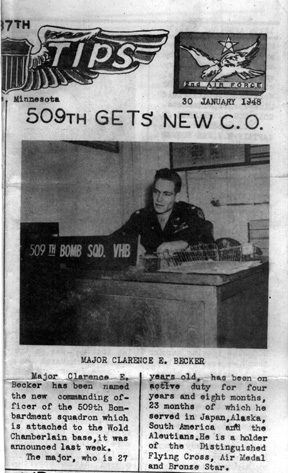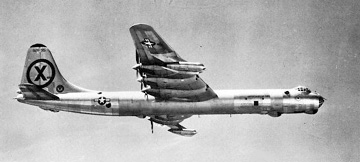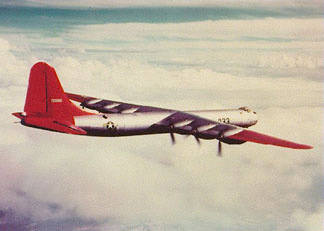The Story Of One Of The 91st SRS COs.
|
|||||||||||
| I remained in the Army Air Force Reserve as a Major. We drove back to my hometown of Rochester, New York for Christmas with my family. Then I took a job with Norcross, a greeting card firm, as a salesman. First in Chicago for a year and then moved to Minneapolis, Minnesota, where we lived from January 1947 until being recalled to active duty during the Korean War on May 1st of 1951. During that period, Dottie and I were blessed with a daughter, Terry, born on May 20th, 1950. I was active in the Air Force Reserve at Wold Chamberlin Field. The 440th Troop Carrier Wing was equipped with C-46 aircraft. I became the Tactical Group Commander and promoted to Lt Col. When the recall came, Strategic Air Command had priority to interview and assign the personnel they wanted. My background in photo reconnaissance led to my assignment to the 5th Strategic Reconnaissance Wing Heavy at Travis Air Force Base in California. The wing had just converted from the recon RB-29s to the ten engine RB-36. After a year on the wing staff in the operations training section, I was given command of the 72nd Strategic Reconnaissance Squadron. |
|||||||||||
 |
|||||||||||
| The RB-36 had a 230 foot wingspan and was powered by six 4360 corncob pusher engines and four GE jets. A most magnificent plane. The recon version had a 22 man crew as opposed to the bomber version with a crew of 11. I spent the next 19 months with the greatest job I ever could have wished for |
|||||||||||
 |
|||||||||||
|
|
|||||||||||
| A few highlights of my watch as squadron commander. The RB-36 had no air refueling capability, but it carried some 30,000 gallons of gas. My longest mission in the “Peacekeeper” was 40 hours non-stop Travis to Travis during which we flew radar scope photography of the entire periphery of Alaska The takeoff runway at Travis lined up with the San Francisco Golden Gate Bridge. It was always a thrill to look back from the aircraft commanders seat as you passed over the bridge while climbing thru 10,000 feet or so to look back over the fuselage and see the runway directly behind. I will always remember the Stanford vs California 1952 football game played at Berkeley. One of my instructor pilots, Captain Jean Pratt was test flying an RB-36 that Saturday afternoon and he had our Wing Commander, Major General Walter “Pop” Arnold aboard. I was watching the football game at our home in Vacaville when all of a sudden the TV cameras shot skyward to see this RB-36 overflying the stadium at about 1500 feet with 5 of the 6 reciprocating engines feathered. The announcers were in a panic for a moment thinking that the plane was in trouble. This was followed immediately by a phone call from the Wing Operations Officer, Colonel Martin Schofield asking me to meet him on the flight line when the plane landed.. What had happened, the aircraft commander had called down to the nose of the plane where Pop Arnold was at the time and asked him whether he minded if he feathered five. Pop naturally thought he meant the number five engine and said OK.. Instead, Gene Pratt had started the four jet engines (which we normally used only on takeoff and at high altitude), and proceeded to feather reciprocating engines one, two, three, five and six. He needed ar least one of the reciprocating engines (2,3,4 or 5) for electric power) as these engines had the Sunstrand alternators needed for electric power. He had plenty of power. Col Schofield was not aware that Pop Arnold was aboard. I was about to get a royal fanny chewing out by him until the Wing Commander stepped off the plane. All was forgiven! That winter, we had a detachment of 4 RB-36s at Fairford, England, an RAF base rebuilt to accommodate our B-47s. It had a runway over 10,00 feet long but only 150 feet wide. We rotated airplanes and crews flying nonstop to and from Travis AFB. I replaced Ltc Bob Hurley as commander of the detachment in January 1953. We were mapping selected areas of Europe and North Africa at very high altitudes from Fairford.. England’s winter weather, with very low ceilings and visibility presented a real challenge. On takeoff, many times we would sit at the end of the runway until we could count ten runway lights and then start our takeoff roll. We had one RB-36 on an icy night, slide off the runway and got stuck in the mud upon landing. It took some heavy equipment from nearby Brize Norton Air Base to pull it back onto the runway the next day. The original RAF small and low communications tower was located only about 250 feet off the centerline of the runway which made a very sporting course in landing under bare minimum ceiling and visibility conditions. There was little room for error with the wingtips already off the paved runway with the plane lined up with the centerline of the runway. To help our aircraft commanders in this dilemma, I authorized them to leave the autopilot aileron controls on throughout the approach until the runway was clearly in sight. We completed our mission and returned to Travis in early March. Our training at Travis that spring and summer was concentrated on improving the effectiveness of the many gun turrets of the RB-36 and to train our gunners against jet fighters at high altitude. We resumed our detachment to England in the late summer and one of my RB-36s en route to the UK encountered multiple engine fires and made the decision to ditch in the Atlantic some 200 miles south of Iceland and 600 miles west of Ireland in the dark of the night. Of the 22 men on the crew, four survived and were picked up by merchant vessels. The ship carrying my squadron navigator, Major George Parkes, and one of the airmen took them to Montreal. The other two went to England on the ship that rescued them. I flew a C-47 Goonie Bird to Montreal with clothing, etc., to pick them up when the ship docked. The hardest job I ever had was to contact the survivors of the men lost in that accident. |
|||||||||||
| In early December, we flew several planes to Eielson AFB, southeast of Fairbanks, Alaska. Supposedly, to test our capability to deal with sub zero Arctic conditions. Unfortunately, the weather did not cooperate. Cold, but not really freezing. So, we were ordered back to Travis. But two weeks later, back we went with really sub zero temperatures that required moving the aircraft every few hours to keep the tires from developing flat spots where they met the pavement. Engine heaters were kept running all the time so that oil would not congeal and prevent engine starts. The ground crews were dressed in the best arctic clothing and worked in short shifts to prevent frost bite. It was a unique experience that lifted our confidence in the ability of our airplanes and crews to perform their mission under extremely adverse conditions. |
|||||||||||
 |
|||||||||||
|
Photo ctsy. Fred Ferrer Collection |
|||||||||||
|
1 — 2 — 3 — 4 — 5 — 6 — 7 — 8 — 9 — 10 — 11 Cover Page — Introduction — Table of Contents Or you may go to Home - Contact Us - Cold War Hist. - 91st SRS Hist. - Stardust 40 Mission Story |
|||||||||||